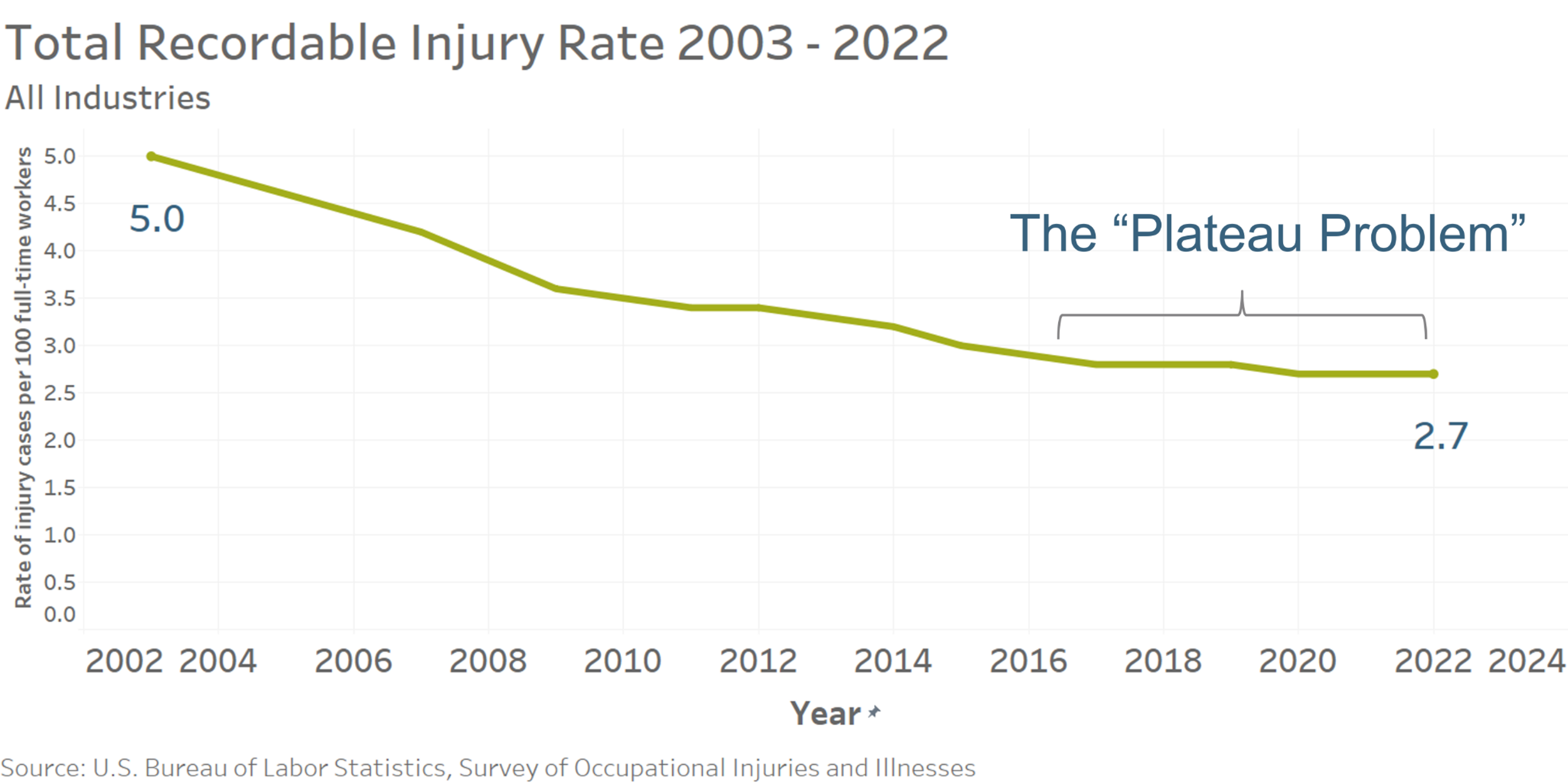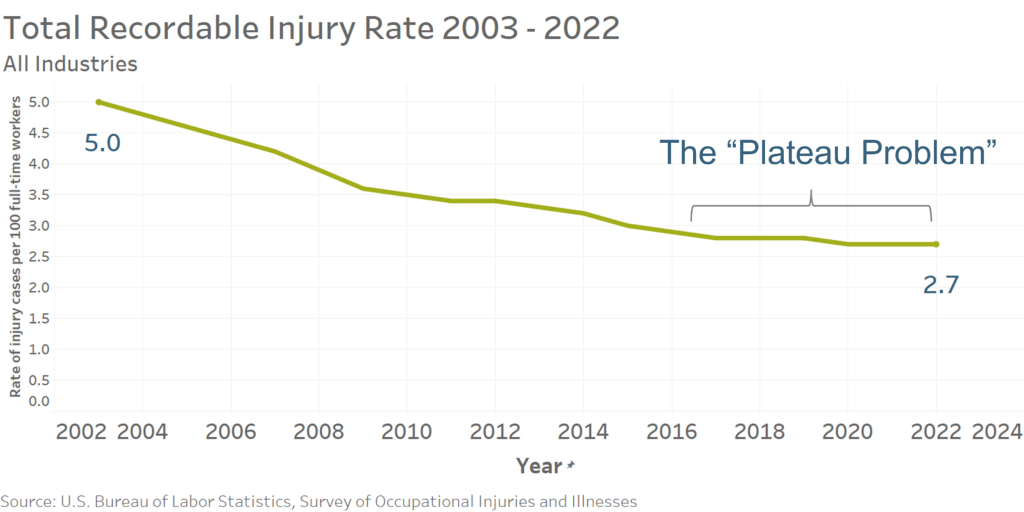Overcoming the “Plateau Problem” in Recordable Injuries

Companies in all industries have strived in the twenty-first century to improve safety. And it has worked. Incident rates have been on a continual decline since 2003, as shown by data from the U.S. Bureau of Labor Statistics (see figure).
This is certainly good news. But safety professionals are not satisfied, as demonstrated by the appearance of programs such as “zero incident goal” initiatives. The fact is, as we get better, it becomes harder to improve. This can be seen in the flattening of the curve since 2016
The Plateau Problem
This was the dilemma facing a manager when he approached the co-founder of First Analytics, Tom Davenport. Tom is a well-known author and speaker on the topic of advanced analytics, and wrote about this story in his book, Competing on Analytics.
In what we might term “the plateau problem”, the manager explained “that safety was a top priority for the company and that it had improved considerably on this front, but it got harder to keep improving.” Furthermore, he said “the company had already used some data to identify likely risks, but there was a lot more that could be explored.”
The answer to his dilemma was data. Not just data alone, but data in conjunction with predictive analytics. The result for his company was breaking through the plateau. They experienced four consecutive record years, reducing reportable injury rates by 28%. While they previously were middle-of-the-pack in their industry, after implementing analytics, they led the industry, with a rate 26% better than their closest peer.
If your company is struggling to break through the plateau, it is time to give predictive safety analytics a try. And do not fret as to where to begin. There is always some small scale way to begin to apply analytics to the safety data you already have.
